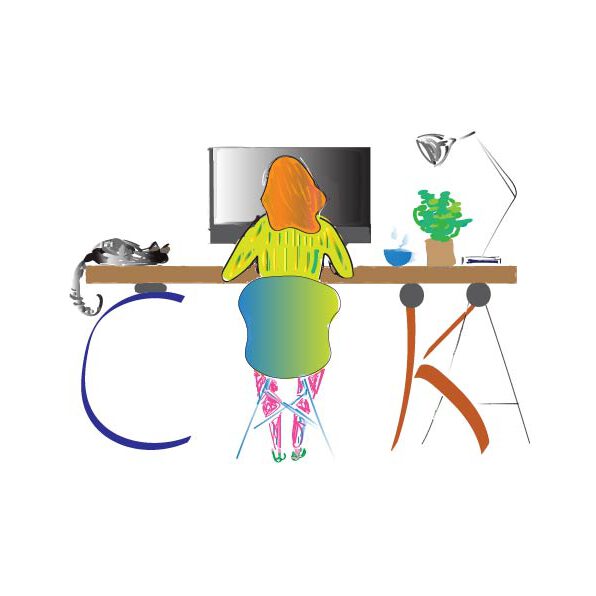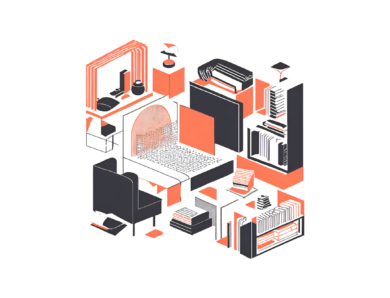
Week 4
Last week, I remembered talking to Louis from my class about what he had said about my brief idea to write about my grandmother. He said it could be an opportunity or I could accept the fact that my grandmother didn’t speak much. He also mentioned something Teresa, one of our tutors from the last module, had said about choosing a topic: are you happy with this idea?
I kept asking myself whether this was the right topic. I felt like I was in a constant cycle of questioning myself, this idea and the past. I had some interesting material from informal conversations with my relatives, but I wasn’t quite sure what I wanted to find out or what my goal was. I only knew that I wanted to tell a story that did not fit the common narrative presented in various sources about the Sudeten Germans. Finally I wrote to Frauke about my research question, I think she still liked the topic, she just suggested shortening the question. Interestingly, the talk that week went in the same direction I wanted to go with my grandmother’s story. So again, I wondered if I should pursue this idea, because it didn’t seem like something that was unknown to society. But I kept going, kept researching. The whole time I was thinking that telling a personal story is still something that society is not aware of, even if it’s about a bigger issue (like migration in this case).
I also considered other directions, such as the idea of researching more about Bohemian glass (mainly because I thought I could make a connection to the lead glass bowl I had received from my grandmother’s estate) or about glass in general and how we take glass for granted, even though it was an important invention that started in Egypt. Eventually I decided to pursue my original idea about my grandmother in the hope that I could tell an interesting story and fulfil the criteria of the brief.
This week’s lecture: Projecting a new perspective and interpreting emerging trends by Joseph Pochodzaj
- Information design harbours a potential for misuse and manipulation of information -> we as graphic designers have an ethical responsibility;
- eg. census = mass survey of populations of a country to find out how many people, their behaviors etc.; facebooks power
- Migration:
- – Politicians/media exploit their power without questioning or putting immigrants in a larger context -> e.g.: One America News and reporting on immigration costs)
- -> counter reaction: “Truth Checker” analysing Trump’s false or misleading claims during the 2016 election
- – graphs/diagrams can often convey legitimacy but equally they can be as subjective as one of Trumps misleading claims
- – study shows the decline in trust in government and citizens -> US Census 2020: Increasing mistrust and fear of government
- Migrant crisis in the mediterranean: pics of dying people in water, scenes all to familiar -> social response and political actions has often been relatively muted
- -> human story is an emotive and highly political issue
- -> photo of dead 3-year-old Syrian child changed public perception -> humanised the story
Graphics make the extent of the suffering clear, but cannot combat or counter the powerful images in the media. In many respects, it is not possible to establish a connection to the people and their history -> they are reduced to numbers and diagrams. How powerful are graphs, infos and statistics really in telling a story and changing the public perception of events?
- Data as Visual Essay (New York Times): information design as an integral mechanism for assisting its journalistic reporting -> Information design supports the text and the text supports the images
- The List by Banu Cennetoglu:
- – record of people who died while trying to reach another place -> each of these deaths is unique; impressive archive of traumatic and human stories
- – reach as many people as possible by placing it in different places/contexts/formats, e.g. Art Bienale (was destroyed by people, but the artist left it as it is)
- – design in word processing tool simple and powerful
- recently UK police released crime data -> controversial as it’s not only for people to discover levels of crime in their area but also for police to predict future criminal activity and prevention
- – How is the data analysed and according to which standards? => Risk of discrimination against areas with high crime rates and simplification of complex socio-economic and political situations.
- other examples:
- – https://github.com/awesomedata/awesome-public-datasets#earthscience
- – local governments/national archives
- – page Bomb sight: map of fallen bombs during W2 archive of personal stories etc. -> zoom in and find photos and other document
- Analysis (of data/info)
- – Forensic Architecture (FA) research agency
- – example of Grenfell Tower fire: video/images from members of public -> evidence -> 3D platform to analyse
- -> a way of acting politically as a citizen in the world and understanding the world through information
- the danger lies in trivialising important things
- “Art is not only a license to fictional, that the aesthetic practices could be useful..”
- – Forensic Architecture (FA) research agency
- Forecast: How we use data analysis to create projections of future trends and cultural behavior and transparency
- e.g. Future Labratory: world’s most renowned future consultancy
- Their process:
- – connect with network experts
- – “paint pictures” that you can not with stats and facts
- – case study examples (key brands)
- – what does it mean to your brand and how can it make use of this trend?
- they give presentations to those topics which are meant to be challenging, provocative, controversial and fun => make your audience think, make them wake up
- Engage: Humans need to tell stories and to understand the world
- Edward Debono: 90% of error in thinking due to error perception -> changing the perception
- -> also changes the emotion -> new ideas and realities
- We are here#: data of soldiers that died in W2-> street performance where artists played the role of those in public -> activated historical narratives
- London rights 2011: www.field.io design agency reframed movements of riots by mapping human moments with sensors -> visualisations of movement and behavior
Resources this week:
–It’s Nice That (2018), Nicer Tuesdays: Offshore Studio:
design informs editorial decisions and the other way around
Migrant Journal:
- heterogenous content: aspects of Atlas as a name concept (territory, space)
- different points of entry for the reader: text and visual
- custom typeface for the Journal
- “spot” color: color that creates a pattern
- at the beginning always editorial letter (set the mood)
- photo story: only use photographs with captions
- textures: intensify reading experience
–DiSalvo, Carl (2012), ‘Chapter 2: Revealing Hegemony: Agonistic Information Design’ in Adversarial Design
- State-Machine Agency: set of financial forces that are exerted by special groups through campaign funding -> expose and document power structures and networks of influence
- Alex Galloway: Internet as giant database and input stream that can be scanned and parsed + mutability of data;
- Network as a medium of storage, access and exchange: primary qualities of computational media
- hegemony = one group develops dominance over another (not by force with their content)
- Social Network Visualisation:
- show how social network visual. can provide awareness of entanglement money & politics, structures and patterns of influence -> Potential of computational information design to communicate hegemonic conditions and provide evidence
- e.g. “They Rule” (www.theyrule.net), “Exxon secrets” (Exxonsecrets.org) by Josh On



No Comment